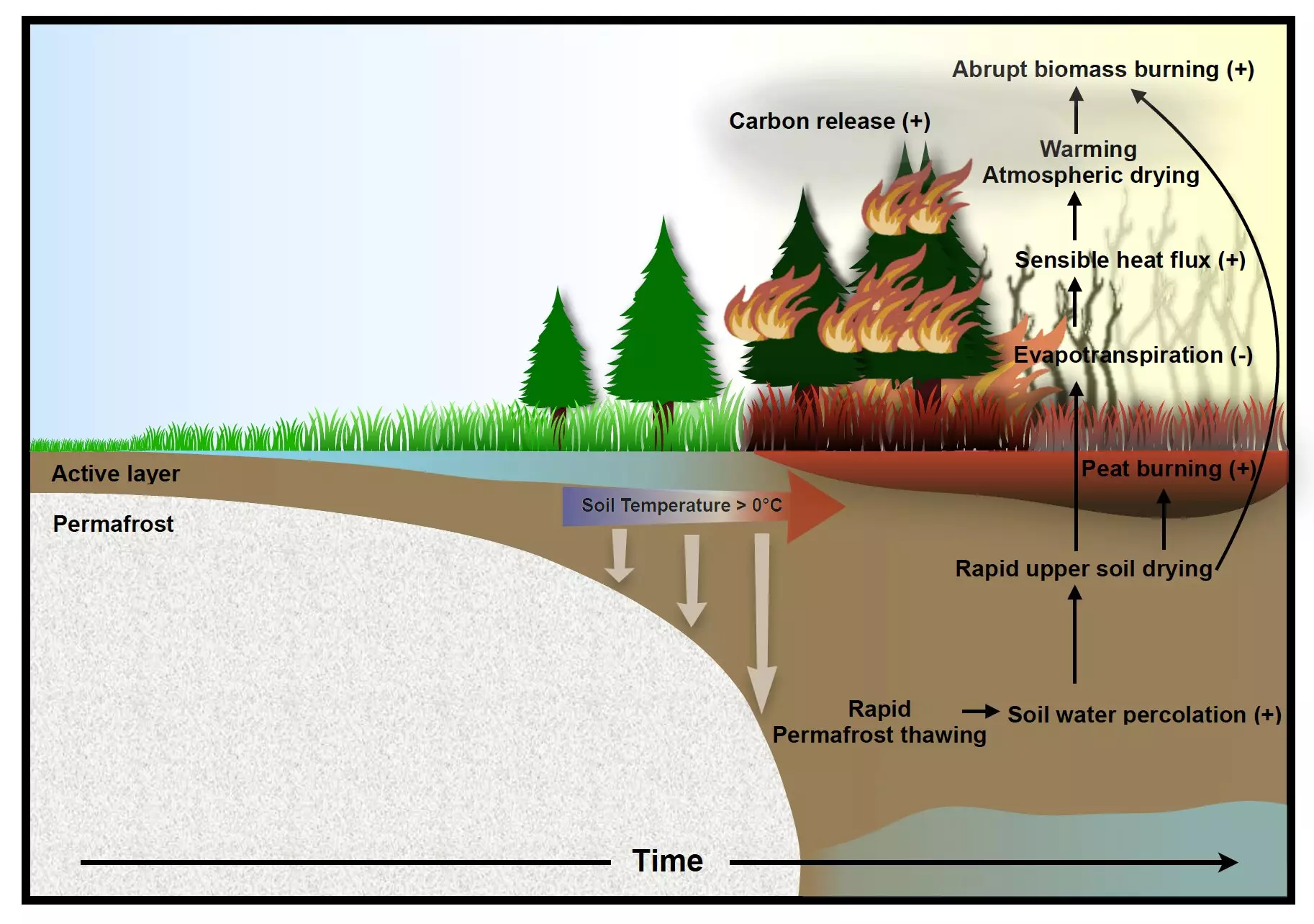The intricate relationship between global warming and ecological disturbances is a critical area of research, particularly concerning permafrost and wildfires. Recent findings published in the journal Nature Communications have spotlighted this issue, revealing that the thawing of permafrost in Subarctic and Arctic regions—such as northern Canada and Siberia—could lead to a sharp increase in wildfire occurrences. This phenomenon poses complex challenges for climate scientists and emphasizes the urgent need to understand these dynamics thoroughly to inform climate actions effectively.
Permafrost, the permanently frozen layer of ground found in polar regions, acts as a significant regulator of soil moisture levels, largely due to its insulating properties. As climate change progresses and temperatures rise, this fragile ecosystem begins to thaw, leading to alterations in hydrological cycles. The study indicates that warmer and drier conditions are already contributing to intensified wildfires in the Arctic, a trend that could accelerate dramatically in the coming decades.
Analyses from the latest computer model simulations reveal that the thawing of permafrost not only releases previously trapped water but can also result in a rapid decrease in soil moisture levels. This decline facilitates conditions that are conducive to wildfires, potentially shifting ecosystems and altering habitats. Understanding this relationship allows researchers to pinpoint the feedback mechanisms that could produce rapid environmental changes.
Previous climate models lacked a holistic approach to examine the interdependencies among permafrost thawing, soil moisture, and wildfire incidents. This new study utilizes the Community Earth System Model, one of the most comprehensive earth system models available, to illustrate these interactions effectively. By employing a suite of 50 simulations that span from 1850 to 2100 under a defined greenhouse gas emission scenario (SSP3-7.0), researchers can dissect the anthropogenic influences on regional climate and ecosystem behavior.
As Dr. In-Won Kim, the lead author of the study, emphasizes, the innovative modeling approach reveals critical insights: by the middle to late 21st century, extensive permafrost thawing is expected across Subarctic and Arctic regions, creating conditions ripe for wildfires. This research highlights the importance of refining climate models to capture the intricate interplay of multiple variables impacting our ecosystems.
The tandem rise in atmospheric CO2 due to human activities presents a dual-edged sword. While elevated CO2 levels can enhance vegetation growth—a phenomenon often termed the “CO2 fertilization effect”—this increased biomass ultimately acts as additional fuel for wildfires. The study underscores that, as vegetation becomes denser, the severity and intensity of wildfires will not only persist but potentially escalate sharply.
In the second half of this century, projections illustrate a concerning shift: areas previously characterized by minimal wildfire activity could transition to regions with rampant and destructive fires in just a handful of years. This sudden change poses significant risks not only to local biodiversity but also to global climate stability due to the carbon emissions released from such fires.
Despite the valuable insights gained from this study, experts like Associate Professor Hanna Lee stress the necessity of enhancing small-scale hydrological modeling within earth system frameworks. Improved observational datasets are crucial for accurately simulating the future trajectory of permafrost landscapes. By refining these models, scientists can produce more reliable predictions regarding the extent of permafrost degradation and its subsequent effects on the climate.
The study’s co-author, Professor Axel Timmermann, further notes the underrepresentation of the interactions between fire emissions and atmospheric processes in existing models. As wildfires release significant quantities of carbon dioxide and particulate matter, the potential for resultant feedback loops that can exacerbate permafrost thawing becomes a critical research area.
The evidence presented in this study serves as a clarion call for a deeper investigation into the complex dynamics of climate change, particularly as it relates to permafrost thawing and wildfire activity. As conditions in the Arctic continue to evolve, understanding these interactions will be essential for developing effective climate adaptation and mitigation strategies. Only through an integrated and comprehensive approach to climate modeling can we truly grasp the implications of our changing planet and work towards sustainable solutions that address the core issues presented.
In sum, the interplay between permafrost thawing and wildfires not only illustrates the challenges posed by climate change but also underscores the urgent need for coordinated research efforts to confront these pressing environmental threats.


Leave a Reply